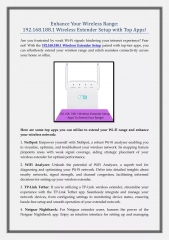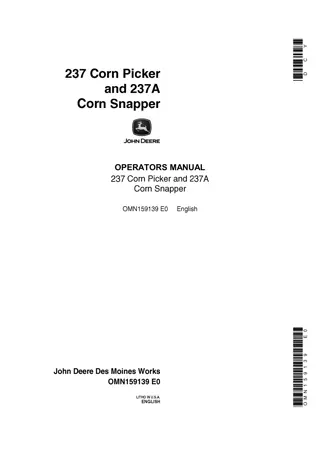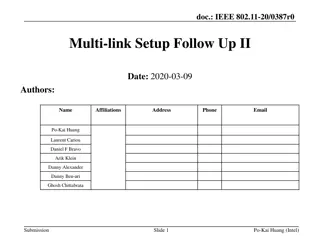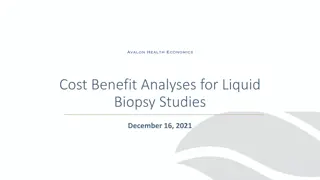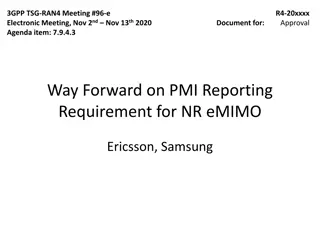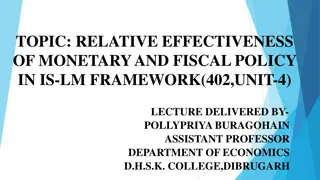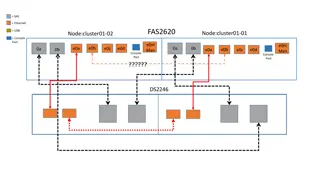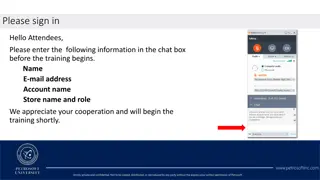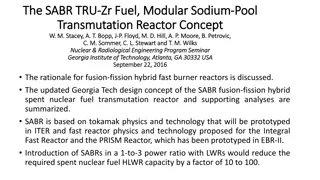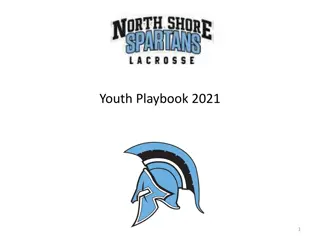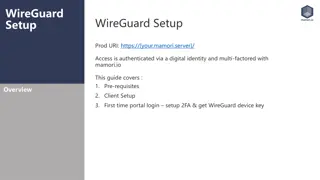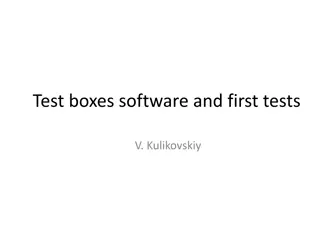Effectiveness of Np-237 Transmutation in QUINTA Setup
Np-237 transmutation effectiveness in the QUINTA setup depends on beam particle type and energy. The challenging nature of Np-237, with a long half-life and accumulation in nuclear waste, necessitates fission for disposal. Neutron capture results in the production of other actinides, making fission the primary elimination method. The interaction modes reveal a dependency on high-energy neutrons to favor fission over capture. Experimental data showcases irradiation conditions, beam energy, particle types, and sample positions, shedding light on the transmutation process of Np-237.
Download Presentation

Please find below an Image/Link to download the presentation.
The content on the website is provided AS IS for your information and personal use only. It may not be sold, licensed, or shared on other websites without obtaining consent from the author.If you encounter any issues during the download, it is possible that the publisher has removed the file from their server.
You are allowed to download the files provided on this website for personal or commercial use, subject to the condition that they are used lawfully. All files are the property of their respective owners.
The content on the website is provided AS IS for your information and personal use only. It may not be sold, licensed, or shared on other websites without obtaining consent from the author.
E N D
Presentation Transcript
Np-237 transmutation effectiveness dependence on beam particle and energy in QUINTA setup S. Kilim, E. Strugalska-Gola, M. Szuta, S.I. Tyutyunnikov, J. Adam, V.I. Stegajlov
Some Np-237 introductory data Radioactive, T1/2= 2.144 106y Produced in a reactor as a nuclear waste. Difficult to burn in PWRs. It accumulates. 17-22.09.2018 Dubna, XXIV Baldin Seminar 2
Basic Np-237 interaction modes with neutrons Neutron capture produces another actinide. Np-237 fission is in fact the only way to get rid of its long lived activity. High energy neutrons needed to make fission prevail over capture. 1 FP ... , n f FPn Np-237 fission and neutron capture CS dependence on energy 237 93 Np . 2 117 d 984,45 27,8% 1028,54 20,38% 1025,87 9,65% 923,98 2,869% 882,63 0,873% ( ) 962,77 0,702% , 238 93 238 94 n Np Pu Basic Np-237 interaction modes with neutrons 17-22.09.2018 Dubna, XXIV Baldin Seminar 3
QUINTA setup core vertical-axial cross section and 3D view Np-237 SAMPLE 1 2 3 4 5 NATURAL URANIUM SECTIONS 1, ..,5 17-22.09.2018 Dubna, XXIV Baldin Seminar 4
Experiment data Beam energy/particle * Date 0.66 GeV/p 2 GeV/d 4 GeV/d 8 GeV/d 24 GeV/C6+ 0.66 GeV/p 22 Jun 2017 08 Nov 2014 04 Dec 2012 13 Dec 2012 22 Dec 2012 18 Dec 2013 Irradiation time (h) Total number of beam particles Sample position 5.25 5.72 6.27 9.35 16.17 22.8 7.78(9)x1014 8.64x1014 3.052(9)x1013 3.569(15) x1013 1.390(8) x1013 1.75 x1011 Left side window Left side window Left side window Left side window Left side window Top of section 2 Top of section 4 *Particles: p proton, d deuteron, C6+ - carbon During the 22.06.2017 experiment the Np-237 samples were located on top of section 2 and section 4 of QUINTA while during the remaining ones in the left side window in lead shield. During the 22.06.2017 experiment QUINTA was configured without lead shield. 17-22.09.2018 Dubna, XXIV Baldin Seminar 5
Experimental data work-out details S 1 t t = t k ir real t I e ( 1 ) ( ) + f t t 1 m I COI e e ir real f p live - deuteron beam integral COI correction for gamma quanta coincidence k isotope decay constant t+ cooling time tir irradiation time treal real time of measurement tlive live time of measurement If actinide fission rate, per deuteron and per gram gamma line index f reaction index (f = fission) S gamma peak area f isotope production yield [%] m activation sample mass [g] p gamma spectrometer efficiency I gamma line intensity [%] 17-22.09.2018 Dubna, XXIV Baldin Seminar 6
Experimental data work-out details S 1 t t = t k ir real t I e ( 1 ) ( ) + f t t 1 m I COI e e ir real f p live - deuteron beam integral COI correction for gamma quanta coincidence k isotope decay constant t+ cooling time tir irradiation time treal real time of measurement tlive live time of measurement If actinide fission rate, per deuteron and per gram gamma line index f reaction index (f = fission) S gamma peak area f isotope production yield [%] m activation sample mass [g] p gamma spectrometer efficiency I gamma line intensity [%] p = 2.0027x5 + 1.0373x4 - 1.0403x3 - 1.0105x2 + 0.3977x - 9.5181 x = ln(Eg) R = 0.8745 Example detector efficiency function 17-22.09.2018 Dubna, XXIV Baldin Seminar 7
Basic Np-237 FP identified decay chains part 1/2 9.63 ? 1024.3 ??? 749.8 ??? 33% 23.61% 49.71? ?? 100% 555.58 ??? ?1=3.93% 91 91 91 ?? ? ? ??????? 38 39 39 2.71 3.54 ? ?? ? 1383.93 ??? 953.31 ??? 90% 3.52% 934.46 ??? 1405.28 ??? 13.9% 4.8% ?1=4.37% 92 92 92 ?? ? ??????? 38 39 40 64.02? ? 756.729 ??? 724.199 ??? 54% 44.1% 34.975? ? ?? 100% 765.794 ??? ?1=5.67% 95 95 95 ?? ?? ??????? 40 41 42 16.97 ? 743.36 ??? 507.64??? 93% 5.03% 72.1? ? ?? 98% 658.08 ??? 97 97 ?1=6.11% 97 ?? ?? ??????? 41 42 40 ?2=6.14% ??????? 8.9207? 30 364.489 ??? 636.989 ??? 284.305 ??? 722.911 ??? 81.7% 7.17% 6.14% 1.773% 149.716 ??? 452.323 ??? 492.66 ??? 602.039 ??? 69% 18.18% 4.826% 4.187 ? ? ?1=0.683% 131 131 132 ?? ? ?? ??????? 52 53 54 2.295 667.718 ??? 772.6 ??? 954.55 ??? 630.19 ??? 99% 75.6% 17.6% 13.3% ? 3.204? ? 228.16 ??? 49.72??? 88% 15% 132 132 ?1=4.75% 132 ? ?? ?? ??????? 53 54 52 ?2=4.85% ??????? 20.8 ? 87% 529.872 ??? ?1=6.46% 133 133 ? ?? ??????? 53 54 17-22.09.2018 Dubna, XXIV Baldin Seminar 8
Basic Np-237 FP identified decay chains part 2/2 52.8? 847.025 ??? 884.09 ??? 1072.55 ??? 595.362 ??? 621.79 ??? 1136.16 ??? 677.34 ??? 540.825 ??? 405.451 ??? 857.29 ??? 95.4% 64.9 14.9% 11.1% 10.6% 9.1% 7.9% 7.63% 7.35% 6.68% 41.8? ? 767.2 ??? 210.465 ??? 277.951 ??? 79.445 ??? 435.06 ??? 565.992 ??? 180.891 ??? 742.58 ??? 29.5% 22.7% 21.2% 20.9% 18.9% 18.6% 18.3% 15.3% ? 134 134 ? ?? 53 54 ?1=4.41% 134 ?? ??????? 52 ?2=6.95% ??????? 9.1 6.57 ? ? 249.77 ??? 608.151 ??? 90% 2.90% 1260.409 ??? 1131.511 ??? 28.9% 22.74% 135 135 ?1=6.71% 135 ?? ?? ? ??????? 54 55 53 ?2=1.37% ??????? 30.7? ? 85.1% 661.657 ??? ?1=6.25% 137 137 ?? ?? ??????? 55 56 14.08? 258.411 ??? 434.562 ??? 1768.26 ??? 2015.82 31.5 20.3 16.7% 12.25 33.41? ? 462.798 ??? 1435.795 ??? 18.6% 19% ? 138 138 ?? ?? 55 56 ?1=5.25% 138 ??????? ?? 54 ?2=0.466% ??????? 91.1? 641.285 ??? 2397.8 ??? 2542.7 ??? 894.9 ??? 1901.3 ??? 47% 13.3% 10% 8.34% 7.16% ? ?1=4.97 142 142 ?? ?? ??????? 57 58 17-22.09.2018 Dubna, XXIV Baldin Seminar 9
Basic gamma lines identified E-gamma, keV 529.87 658.08 667.71 743.36 772.6 1131.51 1260.41 Isotope I-133 Zr-97->97Nb* Te-132->I-132** Zr-97 Te-132->I-132** I-135 I-135 Source FP FP FP FP FP FP FP T1/2 20.87h 16.744h 3.26d 16.744h 3.26d 6.57h 6.57h Fission yield [%] [5] 6.46 6.11 4.85 6.11 4.85 6.71 6.71 I-gamma [%] [4] 87 98.23 98.7 93.6 75.6 22.6 28.7 923.98 962.77 984.45 1025.87 1028.54 Np-238 Np-238 Np-238 Np-238 Np-238 CP CP CP CP CP 2.117d 2.117d 2.117d 2.117d 2.117d N/A N/A N/A N/A N/A 2.869 0.702 27.8 9.65 20.38 FP fission product. CP neutron capture product. *Line 658.08 keV stems in fact from Nb-97 beta decay (T1/2= 72.1 min), but its quantity is modified by Zr-97 decay rate (T1/2= 16.744h) [4]. Therefore Zr-97 decay constant (16.744h) approximates the line 658.08 activity decreasing. **Lines 667.71 and 772.6 keV stem from I-132 (T1/2= 2.295h) but their activities are modified by Te-132 decay rate (T1/2= 3.26d) [4]. Therefore Te-132 decay constant (3.26d) approximates the lines activity decreasing. 17-22.09.2018 Dubna, XXIV Baldin Seminar 10
Np-237 fission and capture rate example partial results put together experiment with 0.66 GeV proton beam Np-237 sample located in QUINTA s left side window in lead shield 17-22.09.2018 Dubna, XXIV Baldin Seminar 11
Np-237 fission and capture rate example partial results put together experiment with 0.66 GeV proton beam Np-237 sample located on top of section 4. 17-22.09.2018 Dubna, XXIV Baldin Seminar 12
Np-237 fission and capture rate example partial results put together experiment with 0.66 GeV proton beam Np-237 sample located on top of section 2. 17-22.09.2018 Dubna, XXIV Baldin Seminar 13
Np-237 fission and capture rate results dependence on beam particle, beam ion energy at sample location QUINTA s left side window Legend: reaction/particle for example F/p fission/proton. Reactions: F fission, C neutron capture. Particles: p proton, d deuteron, C6+ - carbon 6-times ionized 17-22.09.2018 Dubna, XXIV Baldin Seminar 14
Np-237 fission and capture rate dependence on sample location for proton beam 17-22.09.2018 Dubna, XXIV Baldin Seminar 15
Np-237 fission to capture ratio dependence on beam particle and energy 17-22.09.2018 Dubna, XXIV Baldin Seminar 16
Np-237 fission to capture ratio dependence on sample location for proton beam 17-22.09.2018 Dubna, XXIV Baldin Seminar 17
Basic Np-237 incineration parameters for each experiment Particle energy/particle \ Avg. fission and capture fission (10-5g-1p-1) capture (10-5g-1p-1) fission (10-5g-1p-1nucleon-1) capture (10-5g-1p-1nucleon-1) fission (10-5g-1p-1nucleon-1GeV-1) capture (g-1p-1nucleon-1GeV-1) fission (10-5g-1p-1proton-1GeV-1) capture (10-5g-1p-1proton-1GeV-1) 0.66GeV/p 2GeV/d 4GeV/d 8GeV/d 24GeV/C6+ 0.66GeV/p/TS2 0.66GeV/p/TS4 1.67(35) 5.56(87) 8.95(12) 13.3(24) 51.08(135) 1.38(25) 1.28(30) 2.40(42) 1.67(35) 10.10(43) 2.78(43) 20.40(14) 4.47(60) 22.6(14) 6.65(12) 86.06(84) 4.26(11) 1.75(36) 1.85(33) 1.38(25) 1.28(30) 2.40(42) 5.22(22) 10.21(71) 11.31(7) 7.17(7) 1.75(36) 2.09(38) 1.85(33) 1.93(46) 2.53(53) 1.39(22) 1.12(15) 0.83(15) 0.18(5) 3.63(63) 2.61(11) 2.55(18) 1.41(9) 0.30(3) 2.64(54) 2.81(49) 2.53(53) 2.78(43) 2.24(30) 1.66(30) 0.35(9) 2.09(38) 1.93(46) 3.63(63) 5.22(22) 5.11(35) 2.83(18) 0.60(6) 2.64(54) 2.81(49) F/C 0.70(19) 0.53(9) 0.44(7) 0.59(11) 0.59(17) 0.79(22) 0.69(20) F/A 0.41(11) 0.35(6) 0.30(5) 0.37(7) 0.37(11) 0.44(12) 0.41(12) Notes: 1. Experiments with samples at TS2 and TS4 position QUINTA with no lead shield. The remaining QUINTA in lead shield. 2. Experiments with 0.66 GeV proton beam (0.66 GeV/p, 0.66 GeV/p/TS2, 0.66 GeV/p/TS4) - both fission and capture rate and fission to capture ratio are very close to each other. TS2 top of section 2. TS4 top of section 4 of QUINTA. Remainding sample in side window in lead shield 17-22.09.2018 Dubna, XXIV Baldin Seminar 18
Conclusions 1. Fission rate per beam energy unit suggests proton beam to be the best one for Np-237 incineration. It suggests that neutron contained in beam particle nucleus gives much less contribution than proton to target nuclei spallation. 2. The presented data show transmutation rate dependence on beam energy, but it is impossible to state where the maximum is. 3. For fixed beam particle (proton) and beam energy the incineration rate shows no dependence on Np-237 position. Fission to capture ratio shows no dependence on sample position what suggests the neutron spectrum to be uniform throughout entire QUINTA body. 17-22.09.2018 Dubna, XXIV Baldin Seminar 19
References 1. S. Kilim et al.; Np-237 incineration study in various beams in ADS setup QUINTA; Nukleonika 63, 17 22, 2018, https://doi.org/10.1515/nuka-2018-0003 W. Furman et al.; Recent results of the study of ADS with 500 kg natural uranium target assembly QUINTA irradiated by deuterons with energies from 1 to 8 GeV at JINR NUCLOTRON; PoS(Baldin ISHEPP XXI)086. S. Kilim et al.; Measurements of Np-237 incineration in ADS setup QUINTA; PoS(Baldin ISHEP XXII)056 Evaluated Nuclear Data File (ENDF). Interpreted ENDF file. Np-237(FY_cum) Cumulative Fission- Product Yields and (n, ind_Fy) Independent Fission-Product Yields. TABLE OF ISOTOPES, 8E L. Zavorka et al. (2015); Neutron-induced transmutation reactions in 237Np, 238Pu, and 239Pu at the massive natural uranium spallation target; Nuclear Instruments and Methods in Physics Research B 349 (2015) 31 38; Retrieved September 14, 2015 from http://dx.doi.org/10.1016/j.nimb.2014.12.084; 0168-583X/_ 2015 Elsevier B.V. S. R. Hashemi-Nezhad et al. Optimal ion beam, target type and size for accelerator driven systems: implications to the associated accelerator power, Ann. Nucl. Energy 38, 1144 1155 (2011). 2. 3. 4. 5. 6. 7. 17-22.09.2018 Dubna, XXIV Baldin Seminar 20




